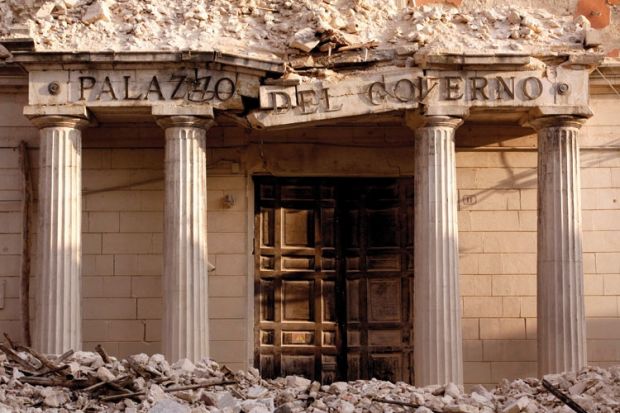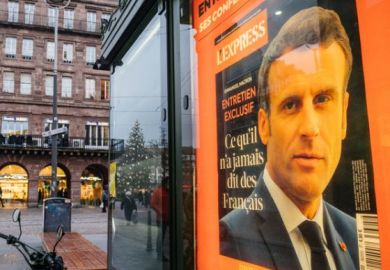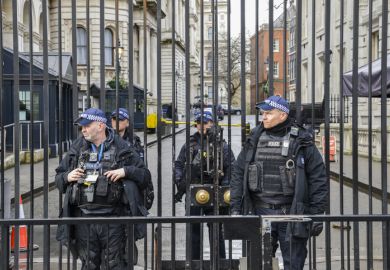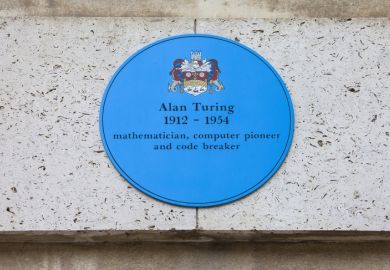Source: Getty
The deputy head of the Civil Protection Department encouraged the public to stop worrying and to raise a glass of wine instead
During the night of 6 April 2009 an earthquake hit the city of L’Aquila, in central Italy. Three hundred and nine people died and more than 1,500 were injured. About 65,000 people – out of a population of 72,000 – had to abandon their homes. Much of the city centre was declared unsafe: it remains cordoned off to this day.
An earthquake of magnitude (Mw) 6.3 in a high-risk seismic area such as the Apennine mountains is not unprecedented. L’Aquila has been hit by major earthquakes in the past, and in 1703 it was razed.
In the aftermath of the 2009 quake, attention focused on the problem of protecting old city centres. Most of the buildings that collapsed or were damaged in L’Aquila were indeed centuries old, with some significant exceptions. Eight students at the local university were killed by the collapse of a dormitory built in the 1960s and renovated in 2000. The technicians responsible for the restoration of the dorm were tried and sentenced to four years in prison.
The question of how best to reconstruct L’Aquila’s city centre became the subject of an intense technical and political debate. The government decided to postpone what looked like a difficult and costly intervention and housed the displaced population in temporary shelters on the outskirts of the city.
The news that shook the scientific world, however, was still to come. In September 2011, seven men – four scientists, two engineers and a government official – went on trial, charged with criminal manslaughter in the death of about a 10th of the victims of the L’Aquila earthquake. They had participated in a meeting of the National Commission for Forecasting and Preventing Major Risks, called by the Civil Protection Department, to assess an ongoing seismic swarm in the region of L’Aquila on 31 March 2009. The prosecution argued that they had “failed in their institutional duty” by not properly assessing and communicating risk. The trial ended last October: each of the seven defendants was given a six-year prison sentence.
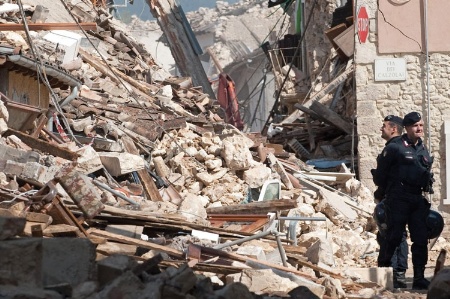
This legal battle is already having a significant impact on the way that scientists deal with authorities and media worldwide
The reaction of the international scientific community to the trial was characterised mainly by bewilderment. Editorials and comments started appearing in the main newspapers and scientific journals worldwide that decried the attempt to turn those scientists into scapegoats for what was, quite simply, an unpredictable natural disaster. The trial has been widely described as one against scientists who were unable to predict the earthquake and alert the public – hence the commentators’ outrage and their characterisation of it as a trial “against science”.
The idea that this was a new version of the trial of Galileo was too tempting to resist and surfaced in the declarations of the defendants as well. The documents of the trial, however, make it clear that what was at stake in the courtroom at L’Aquila was not the scientists’ inability to predict earthquakes, but rather their inability to address public concerns and to communicate risk effectively.
The region surrounding the city had been experiencing minor earthquakes since January 2009. By March, the population was anxious and eager to know more about the meaning of those tremors, as their frequency was increasing. On 30 March, the city was hit by a sizeable earthquake (Mw 4.1). People gathered in the streets and many decided to spend the night outdoors.
The following day the Civil Protection Department called an emergency meeting of the National Commission to assess the risk. The meeting was not held in Rome as is customary, but in L’Aquila, the seat of the regional government, to maximise its visibility and impact. National and local media flocked to the meeting, which was fairly short – just an hour. Four of those who attended were members of the National Commission: the volcanologist Franco Barberi (University of Roma Tre), the seismologist Claudio Eva (University of Genova), the geophysicist Enzo Boschi (then president of Italy’s National Institute of Geophysics and Volcanology) and the seismic engineer Gian Michele Calvi (University of Pavia) – each of them among the most prominent academics in their field.
The other three participants who ended up as defendants were the seismologist Giulio Selvaggi (National Institute), the seismic engineer Mauro Dolce (Civil Protection Department) and the deputy head of the Civil Protection Department, Bernardo de Bernardinis. Also present were representatives of the local civil and police authorities, and Civil Protection Department officers.
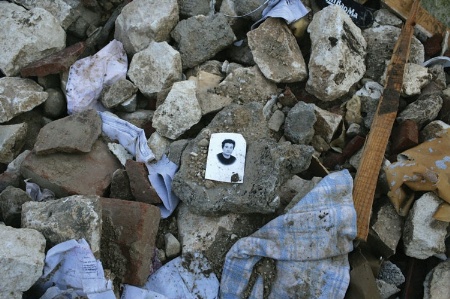
According to the minutes, the seven defendants presented brief statements and then answered a few questions from the local administrators. The scope of their considerations was rather limited: they argued that, given the current scientific understanding of earthquakes, it was impossible to predict if and when a strong shock would hit L’Aquila in the near future. They went on to state that a major earthquake like the one that razed the city in 1703 was unlikely, and that seismic swarms are not necessarily precursors of a stronger shock.
A member of the local council thanked the experts for their statements as they made it possible for her to “reassure” the public. This was done at the ensuing press conference, where the deputy head of the Civil Protection Department and the mayor of L’Aquila urged the public to stay calm, insisting that it was impossible to predict earthquakes and that the scientists thought that no major earthquake was on the way.
De Bernardinis had already talked to the media before the meeting, declaring that the seismic swarm “pose[d] no danger” and that the “scientific community” had confirmed to him that the situation was “favourable”. He argued that the ongoing seismic activity was “discharging energy” from the fault and therefore was to be seen as positive. Prompted by a journalist, he encouraged the public to stop worrying and to raise a glass of wine instead. The local media broadcast the interview and welcomed the heartening news.
The prosecution argued for a causal connection between the statements of the science advisers and their spokespersons, and the behaviour of at least 29 inhabitants of L’Aquila who, reassured by the National Commission’s message, decided to stay indoors after two medium shocks (of about Mw 3.0 and 3.7) hit the city in the hours before the Mw 6.3 shock.
Evidence in support of this causal link was provided primarily by the report of Antonello Ciccozzi, an anthropologist at the University of L’Aquila, who analysed the depositions of the witnesses during the one-year trial. He showed how certain words and images that had been used by the National Commission spokespersons had stuck in the locals’ minds, for example the “discharge of energy” image and the related interpretation of medium shocks as reassuring. The message of the National Commission had, according to his report, interfered with the local “earthquake culture”, a set of entrenched habits and reactions such as, for example, that of spending the night outdoors after the occurrence of medium shocks. That is what some of the victims would have done, the report argued, had they not been exposed to the National Commission’s overly optimistic message – hence the accusation of manslaughter.
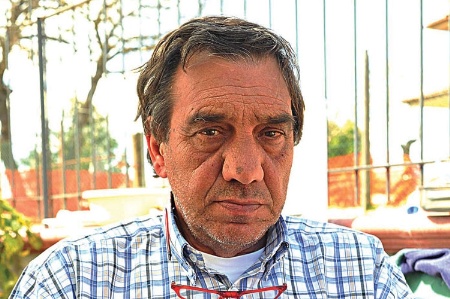
The judge at L’Aquila was convinced by such a causal connection, but there are clearly grounds for challenging it, and that is exactly what the defendants’ lawyers will do at the forthcoming appellate trial. They will argue that it is impossible to prove that the only reason why those people stayed at home on the night of 6 April was the press conference and its media coverage.
This legal battle is already having a significant impact on the way that scientists deal with authorities and media worldwide, and no doubt the international scientific community will watch its future developments closely. Whatever its final outcome might be, however, the L’Aquila trial has already offered some important lessons, which should give pause to scientists and policymakers alike.
For one thing, the expert statements at the National Commission meeting were hardly complete. The scientists seemed trapped in a deterministic framework, according to which we can either predict earthquakes or we cannot. Instead, they could have offered a short-term probabilistic forecast. It has been calculated that during the swarm that preceded the earthquake of 6 April the probability of a strong earthquake in the short term increased dramatically. While the absolute probability remained extremely low – in the order of 0.1 per cent – it was some 100 times higher than the background probability in that region.
This piece of information would not have made for easy decisions but it would have been difficult to misread it as reassuring. Why did the experts not talk in such language? There were different factors at play. One was the media visibility of Giampaolo Giuliani, a laboratory technician and self-styled seismologist who had been predicting earthquakes in the region in the spring of 2009. Using methods that the scientific community considers unreliable, he had already been blamed by some for causing false alarms and he had caused plenty of panic. One reading of the minutes of the National Commission meeting would suggest that the experts wanted to discredit and marginalise Giuliani.
If that is the case, it would seem that the meeting was not just about informing the decision-makers but, to a large extent, it was about reasserting scientific authority in the public discourse. This would explain the unusually public nature of the meeting, and the decision to let the scientists – rather than civil authorities – carry the message. The result of this strategy, however, was that it sidetracked the risk communication and turned what should have been a probabilistic forecast into a deterministic stance against the possibility of earthquake prediction.
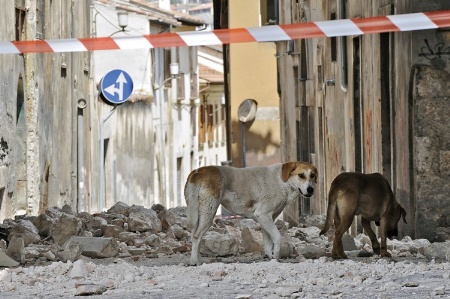
The lack of distance between science advisers and politicians is one of the most troubling aspects of this story. The Civil Protection Department, the institution that called the meeting and organised the communication around it, depends directly on the government. The most optimistic message was sent out by the deputy head of the Civil Protection Department before the meeting. One might suspect that the meeting – which even one of the experts found surprisingly short – was simply a way to provide a pre-packaged reassuring message with a coating of scientific authority.
Wiretap evidence that emerged in January 2012 in an unrelated trial seems to confirm this suspicion. In it, Guido Bertolaso, then head of the Civil Protection Department, is talking on the phone to a local official from L’Aquila about the forthcoming meeting. He says that the meeting has been called not because they are really worried but because they “want to reassure the public”. The meeting is going to be “more of a media operation”: its message should be that earthquakes cannot be predicted. The scientists might well have been unaware of such pre-meeting conversations, but that was indeed all they ended up saying.
The L’Aquila trial offers a rare opportunity to explore the problems and possibilities of future interactions between science advisers, political decision-makers and the public at large. The rapid intensification of these interactions in modern societies calls for frameworks within which the roles and responsibilities of all the actors involved are clearly defined and structured. It also calls for a more systematic use of social science expertise in risk communication. One suggestion, for example, is that communities living in seismic regions should receive frequent updates on short-term probabilistic forecasts and learn to weave them into the texture of their social life – as they might check the weather forecast.
Short-term forecasting could thus complement long-term seismic hazard analysis. Decision-making in situations of low risk of high-impact events is difficult. No one has argued that L’Aquila should have been evacuated before the Mw 6.3 shock. But thresholds could be defined at which specific precautionary measures (evacuation being the most extreme) should be taken.
Finally, it has been noted that the National Commission science advisers did not correct any statement that was made in their name by politicians and Civil Protection Department officials during the week that followed the meeting. One commentator pointed out that they “defaulted to their normal culture, that is, not talking to the public”. Unlike medical doctors, earth scientists thus far have not considered it necessary to be trained to communicate risk and interact with the media. That, no doubt, is about to change.
Aftershock: How the verdict shook the scientific world
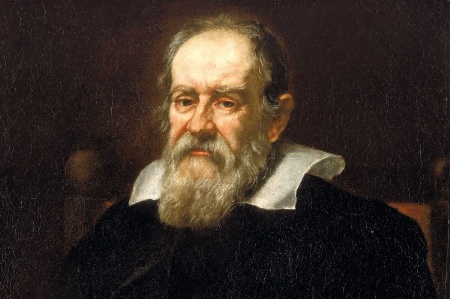
The prison sentences given to Italian scientists after the 2009 earthquake were the subject of headlines around the world and drew strong criticism from many in the science community.
Many worried that experts would be afraid to speak out in future and that people could be deterred from working in the field of seismology.
When the news broke, Lord May of Oxford, former chief scientific adviser to the British government and a former president of the Royal Society, described the sentences as “truly shocking”, arguing that they revealed “appalling ignorance of the basic nature of scientific inquiry within the Italian legal system”.
“The verdict might have been understand-able in the Dark Ages, standing alongside the persecution of Galileo [above], but in today’s world it is simply an embarrassment to the Italian government and anyone associated with it,” he said.
Daily Telegraph journalist Tom Chivers called the verdict an “attack on scientific independence” and argued that “locking up a group of scientists for not doing the impossible is both stupid and counterproductive”.
However, newspaper columnist Simon Jenkins took a different view, arguing that science had rarely enjoyed greater status, and that scientists today expected to combine “the immunity of diplomats and the infallibility of popes”.
Writing in The Guardian last October, he said: “It is outrageous to jail scientists for honest errors, but it is not outrageous to hold them to some account. When did Lord May’s Royal Society last inquire into a scientific scandal? Journalists, like bankers, are getting hell these days for their mistakes. Why let seismologists off the hook?”
Roger Musson, from the British Geological Survey, said the key question was what the case would mean for future relations between the scientific community, the public and the state.
“One can imagine that next time there are rumblings heard from Vesuvius, Italian volcanologists are going to be reluctant to make any statement, because they have no guarantee that they won’t find themselves arrested if they say one thing and it turns out to be another,” he told newspapers.
Speaking earlier this year about a project to help scientists communicate complex theories to non-experts, Erik Brogt, a researcher at the University of Canterbury, New Zealand, said that since the decision, “the science community may be worried that if scientists give the wrong message they could attract personal liability, humiliating public scrutiny and reputational damage”.
But when the sentences were handed out, the former government chief scientific adviser Sir John Beddington said he did not think that such an outcome would be possible in the UK, where he believed the only possible risk of criminal prosecution in similar circumstances would be if the advice was demonstrably grossly negligent or wilfully malicious.
Times Higher Education reporters
Register to continue
Why register?
- Registration is free and only takes a moment
- Once registered, you can read 3 articles a month
- Sign up for our newsletter
Subscribe
Or subscribe for unlimited access to:
- Unlimited access to news, views, insights & reviews
- Digital editions
- Digital access to THE’s university and college rankings analysis
Already registered or a current subscriber? Login
